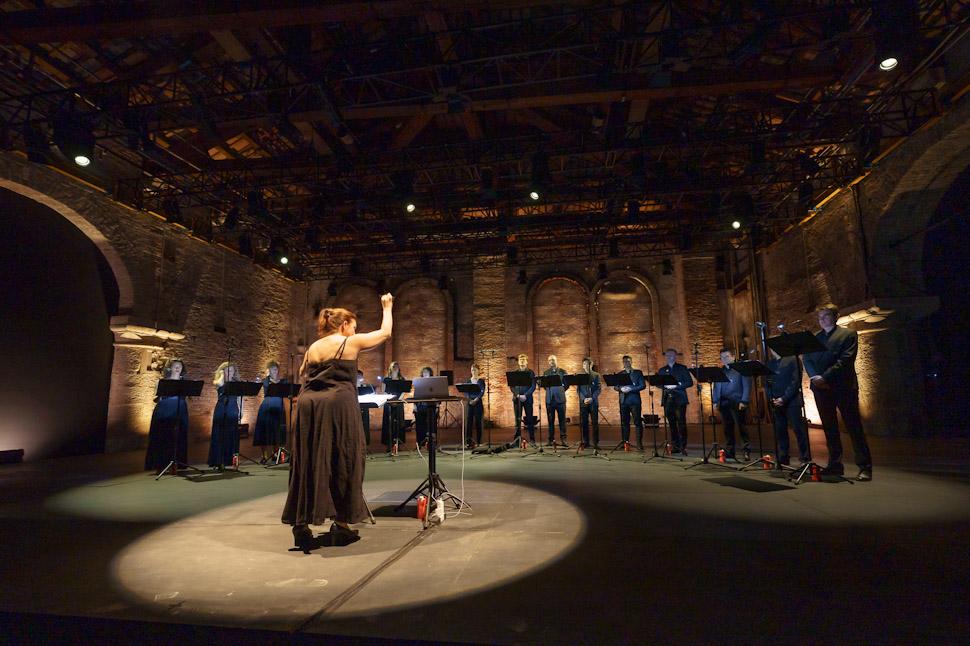| Santa Ratniece: | Saline (2006, 12’) for choir, Italian premiere |
|---|---|
| Arvo Pärt: | Missa syllabica (1977-1996, 16’) for choir |
| Justė Janulytė: | Radiance (2015, 30’) for choir and live electronics, Italian premiere |
| Vocal ensemble: | Sequenza 9.3 |
| Conductor: | Catherine Simonpietri |
| Electronics, perfomance: | Michele Tadini, Antonello Raggi |
| Sound projection: | Thierry Coduys |
Santa Ratniece / Arvo Pärt / Justė Janulytė

SANTA RATNIECE - SALINE
Saline is my first choir composition and my first experience of vocal music in general. I wanted to enter in a sound world I never heard before and which has no references to any other choir music. I started with simple breathing-in and breathing-out, then dived deeper in whistle sounds, hissing and gasping sounds. During the piece, all these sound elements develop individually, converge and transform, crossing the borders of actual human voice. Soon these sounds are joined by separate syllables taken from Armenian language, chosen by its phonetic sounding. At the end of the piece, some melodies pour out, and this can be associated with Armenian folk music, specifically the timbre and colour of duduk.
Santa Ratniece
ARVO PÄRT - MISSA SYLLABICA
Missa syllabica (1977) is one of Arvo Pärt’s earliest tintinnabuli compositions. According to composer, the three notes of a triad are like bells, and that’s why he called its new tonal style tintinnabuli, from Latin word for little bells. The music is syllabic, as the title suggests: one note corresponds to each syllable. In addition, the pitches are derived from the length of the words, just as rhythms and interphase pauses come from the structure of the text and the punctuation. The lack of any emotional tension is achieved by avoiding a leading note to establish the tonal centre and the classical-romantic way to treate the dissonance. Pärt’s harmony is tonal but non-functional, with the prevailing present of the tonic triad throughout or in a large section of a composition. Each one of the omnipresent triad’s tones can function as a centre (central pitch), and the melodic-voice moves either towards it or away from it.
JUSTĖ JANULYTĖ - RADIANCE
Radiance is a metaphoric reflection of the anatomic/philosophy, energetics/poetics of the nuclear explosion; intending to be a requiem for the victims of the first atomic bombing. The structure of the composition is an overlap of two antiphonic processes of radiation: two groups of high and low choir voices that initially live in a unison start radiating, splitting (fission), because of the strong attraction between opposites poles, their territories get closer, until, they completely merge (fusion). Therefore the explosion becomes inevitable.
Justė Janulytė